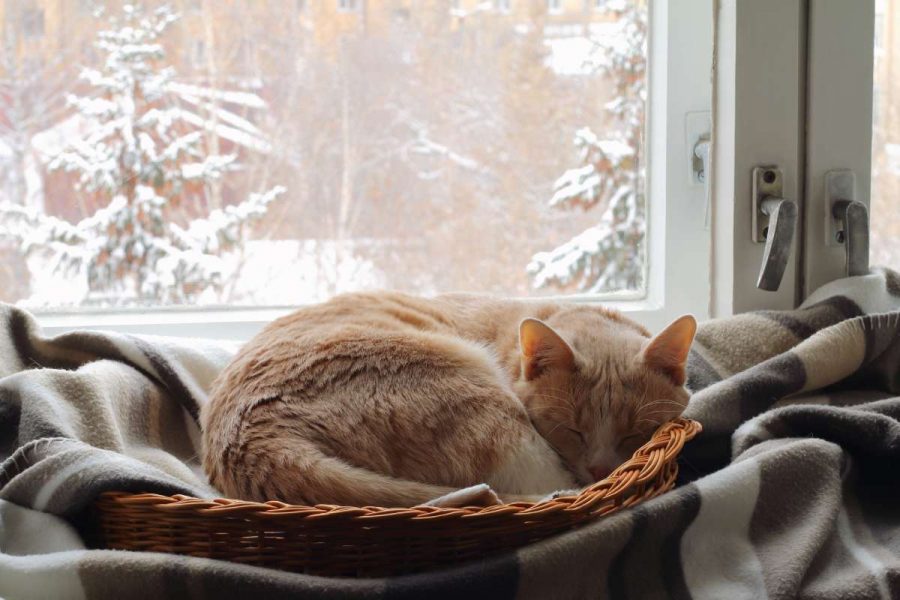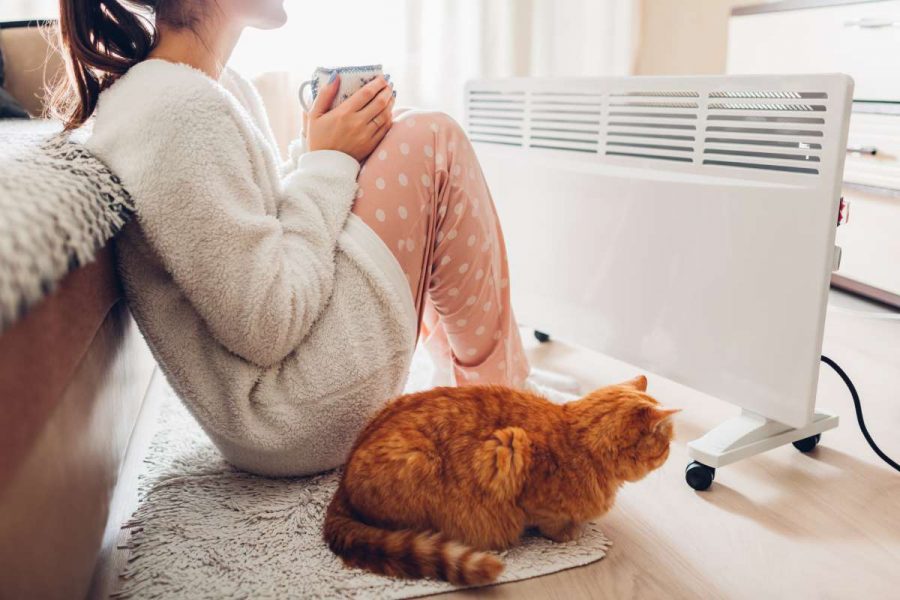When winter arrives, cats’ fur thickens to cope with low temperatures. For cats that have access to the outdoors, outings become less frequent and for others, naps are taken near radiators. Whether an indoor cat or an outdoor cat, each animal tries to adapt their lifestyle to the season – but how can we help them? The cold brings with it some dangers for our four-legged friends, so here are some tips to help them get through the winter.
1) Set up some resting places
If your cat has access to the outside, it is important to ensure they have somewhere to shelter from the cold during your absences. This can range from a small wooden pet house, to a repurposed pet carrier. The important thing is that this shelter is:
- Easy to access;
- Equipped with two openings to allow your pet to escape easily in the event of a problem;
- Elevated, using wooden planks for example. This avoids the shelter being in contact with the ground and it will thus be better protected from cold and humidity. In addition, the higher the shelter, the more your pet will be able to monitor their surroundings;
- Straw flooring. Indeed, straw has many advantages. It is a natural material and a very good insulator. You can put it on the floor of the shelter. But be careful, do not confuse straw with hay, as the latter is not only a bad insulator, but in addition, may turn mouldy with time;
- Without food so as not to arouse the curiosity of other animals;
To perfect the insulation of your shelter, you can cover the inner walls with polystyrene, which will ensure the heat is even better conserved.

If your cat does not have access to the outside or does not want to face the harshness of winter, consider a few changes to your interior. Place pet beds close to radiators or other sources of heat. No need to invest. A simple folded fleece blanket or basket will do the trick. However, be careful not to put these beds in direct contact with the heat source to avoid any burns or even fire.
2) Keep your cat busy
Even if your cat tends to sleep longer in the winter, keep in mind that a cat that sleeps too much might be a bored cat. On average, a cat sleeps between 13h and 15h a day. Their naps are spread throughout the day and night. Contrary to popular belief, cats are not nocturnal animals but rather dawn– and dusk– loving animals. Their internal clock prompts them to go out at the same time as their prey. This explains the famous “fifteen minutes of madness” at the time of your bedtime as well as the insistent meows from the first light of day!
To occupy your pet’s winter days and thus limit these moments of sudden excitement, you must help them expend their energy! It couldn’t be easier:
- Install educational toys. These toys are a kind of cat puzzle in which you hide kibbles or treats. Your cat must work out how to access this reward;
- Have a cardboard box in your living room. This inexpensive packaging is internationally recognised by the feline population. Hours of fun in perspective!
- Install a cat climbing tree or chair near the window so that your cat can keep watch: fundamental to their well-being;
- Play with them! Even if your cat has a lot of toys, there is little chance that they will occupy their days playing alone. It is important to play with your pet at least 10 to 15 minutes a day. A string, a lace, a cork stopper… many everyday accessories amuse cats;
3) Check your pet
If your cat goes out, it is important to regularly check the appearance of their pads. These can be harmed by the cold or even the salt used to prevent ice. To clean them, gently wipe with a damp glove.
Quiet moments or cuddles are the perfect time to gently inspect your pet. As you stroke your cat feel their belly and paws, and examine their ears and mouth. If your pet refuses, do not insist. These moments must remain pleasant for them, so do not force it. You can try again another day.
4) Take care of elderly or sick cats and kittens
At the extremes of life, cats are more sensitive to winter (and summer!) temperatures. To protect them, install beds near heat sources and allow them access to places where they can warm up such as: your wardrobe or your duvet.

5) Adjust their portion size
In winter, cats will naturally gain weight. These extra fats allow your pet to cope with winter. It is therefore necessary to ensure that your pet’s portion size is appropriate for the season but also for its level of activity. Depending on your pet’s lifestyle (indoor/outdoor), daily stimulation and temperament, their energy needs will vary. To better understand it, nothing better than a GPS collar to track your pet’s daily activities. The app will give you an account of their daily activities. This information will help your veterinarian to better adjust their food portions.
6) Keep the antifreeze at bay
In winter, it is impossible not to mention antifreeze. This formidable poison for cats (and dogs) comes in the form of a viscous liquid. Its sweet taste is irresistible to a number of cats unfortunately. However, this product can cause serious damage to the kidneys and cause the death of the animal within a few days. So you must be careful.
To avoid this disastrous situation, there is no miracle solution other than preventing your pet from accessing your car.
This article might interest you: how to take care of an senior dog?
